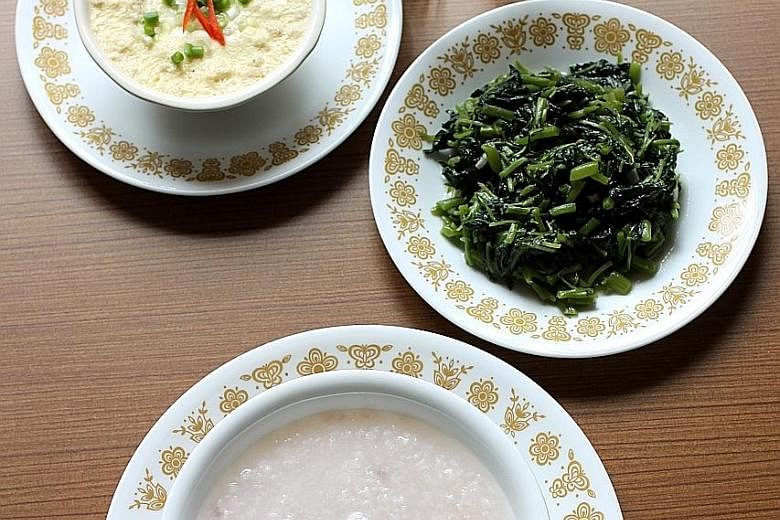People who choke or cough while swallowing may have a deeper problem than just food going down the wrong way.
They may have dysphagia or swallowing difficulties, a condition that makes it hard for a person to eat and drink.
While coughing or choking when swallowing are symptoms of dysphagia, some do not show these symptoms when food or drinks are swallowed into the lungs, said Ms Lee Yan Shan, a speech therapist at Singapore General Hospital.
Dysphagia is a symptom of many medical conditions, such as throat and mouth cancer, general weakness from a stroke, Parkinson's disease and dementia.
Older adults are at a higher risk of the condition and they are also at a greater risk of conditions that may result in dysphagia.
People who have difficulties swallowing may tend to eat or drink less or take a long time to finish their meals.
his puts them at a higher risk of malnutrition and dehydration, said Ms Lee. Speech therapists can recommend diet or fluid modifications and feeding strategies to reduce the patient's risk of choking and sucking food into the airway, she said.
Besides coughing or choking during swallowing, other symptoms may include:
- Drooling and the inability to control saliva in the mouth.
- Difficulty initiating swallowing.
- Significant food or liquid residue in the mouth even after attempts to swallow it.
- Regurgitation of food.
- Pain while swallowing.
- Sensation of food getting stuck in the throat or chest.
- Unexplained weight loss.
- Recurrent pneumonia symptoms.
Ms Lee gives the following advice on how caregivers can help someone cope with dysphagia:
1 Cut food like meat and vegetables into small pieces, making it easier to bite and swallow.
2 Thicken fluids with commercially available powdered and liquid thickeners. These are mainly made from starch and gum. Fluids that are viscous flow at a slower rate. This helps to minimise choking.
3 Monitor for worsening signs of dysphagia and, possibly, aspiration pneumonia.
When food and drinks enter the airway instead of the stomach, it can cause choking and coughing and may lead to a type of chest infection called aspiration pneumonia. Symptoms may include coughing with yellow or green phlegm, fever, fatigue, shortness of breath and loss of appetite or weight loss.
4 Consider the patient's wishes. Talk to him about what is important to him at various stages of his illness. For example, in his last days of life, he may choose to continue eating or drinking despite the risk of food or drinks entering his airway.
5 Take the patient with dysphagia to the dentist. Oral hygiene is very important. Bacteria in the mouth can be sucked into the lungs, together with the food, drinks and saliva during swallowing. This increases the risk of aspiration pneumonia.
Let the dentist know that the person has dysphagia, so that he can take extra precautions during the dental procedure.


